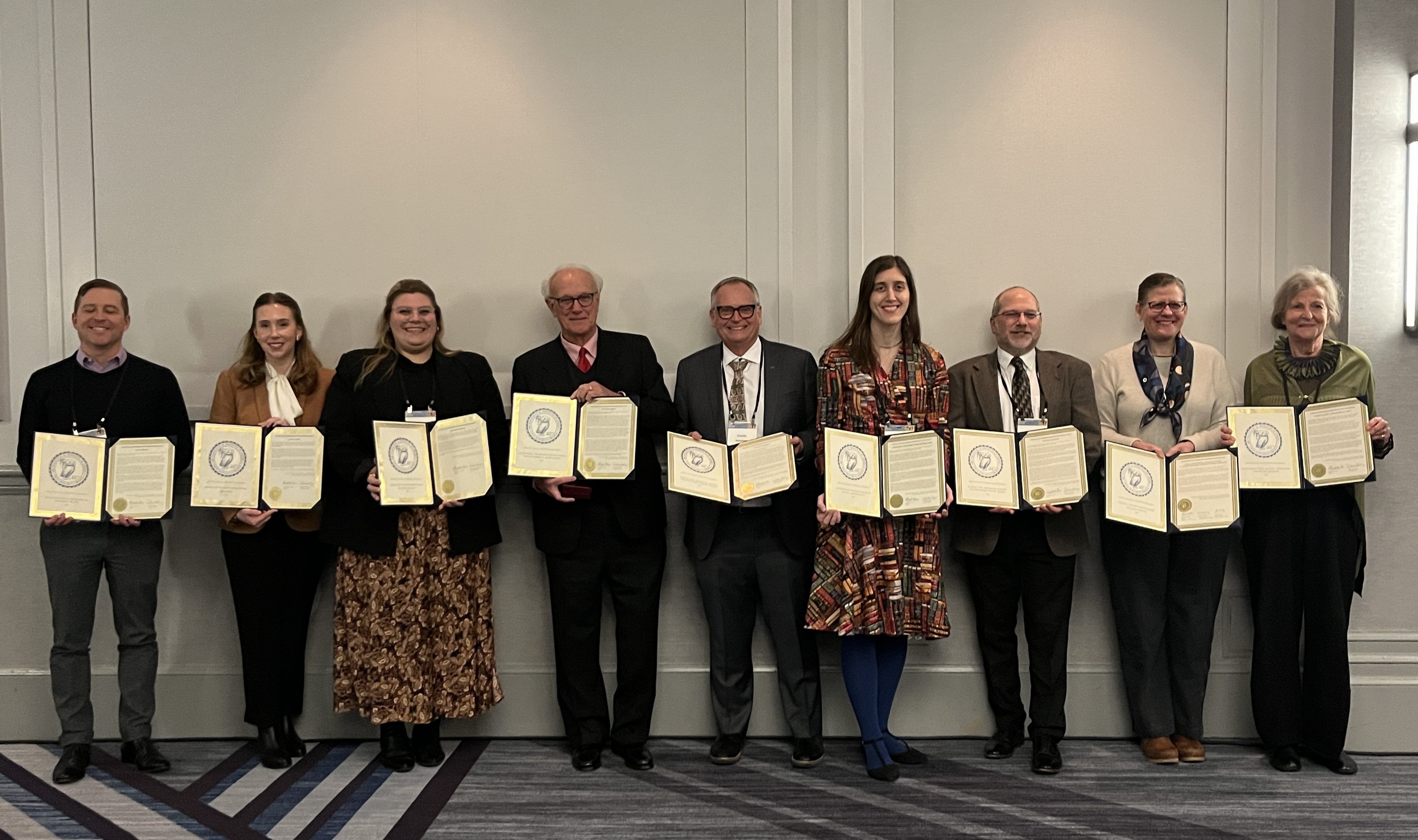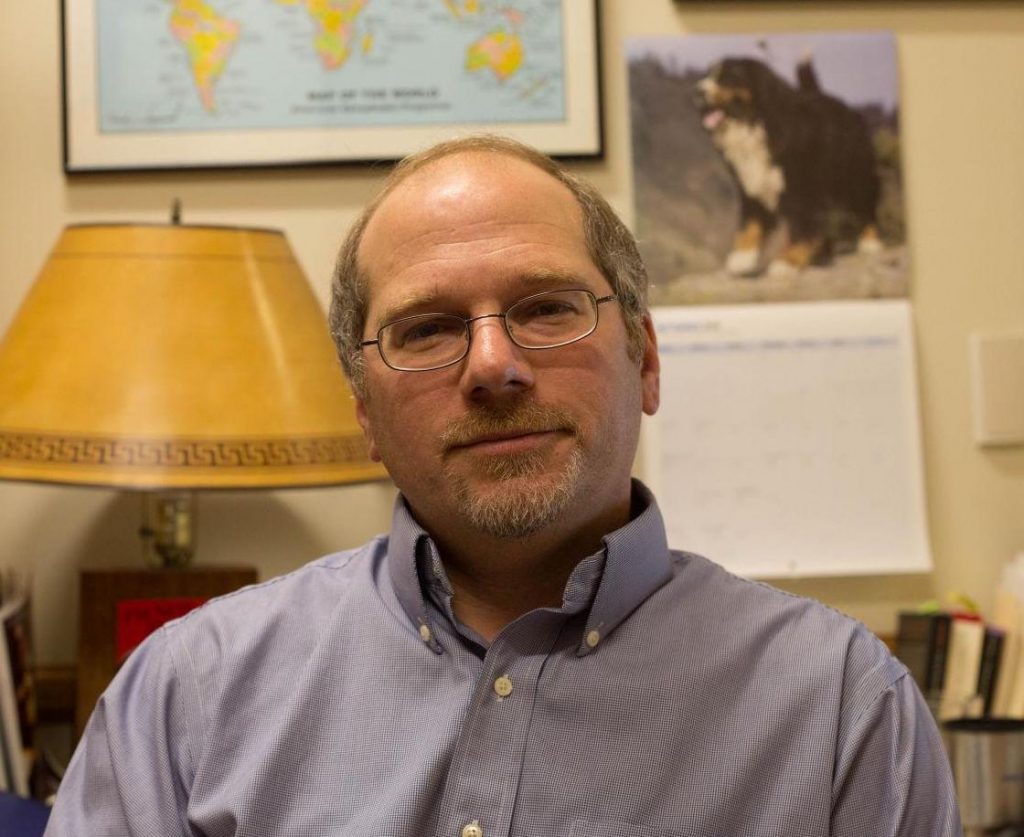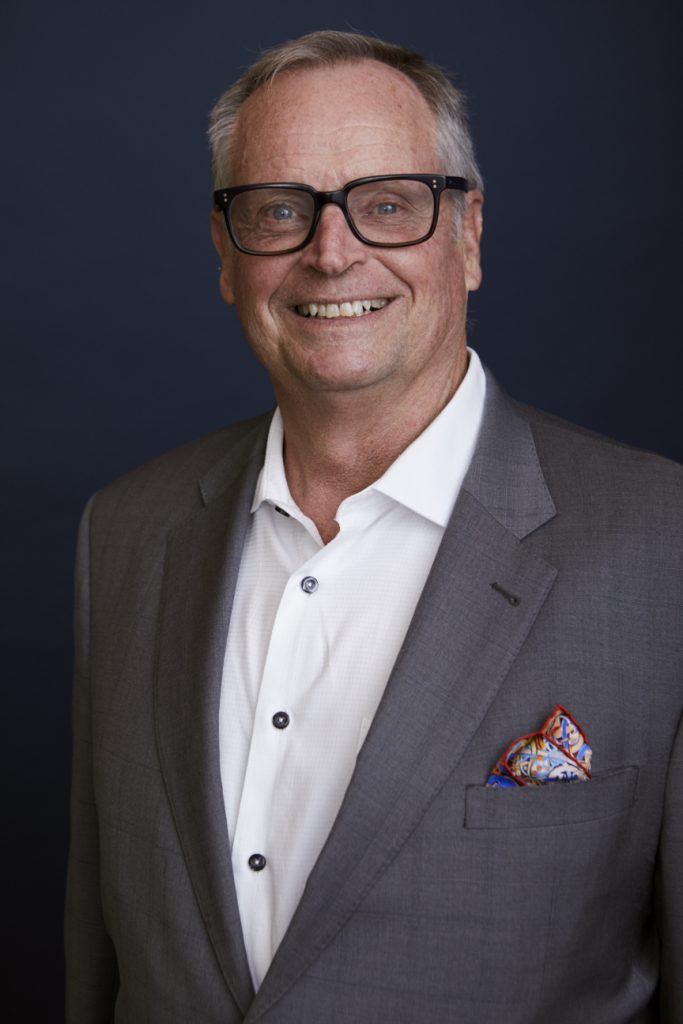March 13, 2024

Congratulations to the individuals, projects, and publications that received awards at the 2024 AIA Award Ceremony in Chicago, IL! We have reached out to last year’s winners to learn about their projects, experiences, and what drew them to the field of archaeology.

Andrew Goldman (Gonzaga University)
Award: Martha and Artemis Joukowsky Distinguished Service Award
Deadline: September 15, 2024
What drew you to archaeology?
I was drawn to archaeology through a combination of intellectual curiosity and a set of excellent advisors. I have always loved puzzles, and I found that archaeology provided me with an endless source of “what ifs?” and “whys?” with which to engage. When one looks behind the proverbial “green curtain” (= public front) and begins to delve firsthand into the archaeological data, one learns that the gaps in our knowledge are tremendous — and open for exploration. As an undergraduate, investigating Nuraghis in Sardinia with AIA Past President Steve Dyson had me hooked, as we surveyed these ancient structures and challenged traditional sources like the Roman historian Livy. More than anything, enthusiastic teachers and open inquiry drew me into archaeological exploration and a career in the field.
Tell us about your history with the AIA:
I was encouraged as a senior undergraduate to attend the annual meetings of the AIA, and I found my first experience simply overwhelming. I had had no idea that the field was so large, complex and active, and the annual meetings became an annual excursion for me, when I made new acquaintences and broadened my knowledge in the field. I began my service to the AIA in graduate school, at UNC – Chapel Hill, where I served as the student board member. In the late 1990s I began to present papers at the annual meetings and at individual societies, and in 2004, after arriving in Spokane WA for my new job at Gonzaga University, I joined the local board as a member, and then as an officer. Over the next 20 years, I helped to run the Spokane Society (511), and in 2008 I was invited to become an AIA traveling lecturer, ultimately visiting more than 30 different societies in the US and Canada.
What’s next for you professionally?
Exciting projects lie ahead for me, starting this year with my sabbatical and the completion of my monograph, “Roman Gordion”, which examines the Roman-period settlement and cemeteries at ancient Gordion in central Turkey. With the completion of this volume, I will move on to three new projects. First, in 2025-26, I will serve as the Professor-in-Charge of the Intercollegiate Center for Classical Studies (ICCS) in Rome, and will have the opportunity to work closely with colleagues and undergraduates to explore the archaeology of ancient Rome. Second, I will continue my work with the Sinop Regional Archaeology Project (SRAP), of which I have been the field director since 2014. We hope to obtain a new permit to continue our excavation of the colonial and pre-colonial settlements at ancient Sinope, on the Black Sea coast of N. Turkey. Finally, I will be continuing my work with the Aegates Underwater Survey Project based in Favignana, Sicily, to analyze materials recovered from the maritime site related to the Battle of the Aegates Islands (241 BCE). After publishing some of their early finds, I am continuing my work with a new team of colleagues there, to eventually publish the large cache of ancient weapons and armor recovered from the Mediterranean seabed.
What is a moment that stands out in the time you’ve volunteered with or represented the AIA?
The moment that stands out to me as an AIA volunteer was our Spokane society’s recent 75th anniversary event, at which we recreated an early Iron Age feast, one based upon the archaeological finds from the so-called Midas Tumulus at Gordion, Turkey. What stands out in my mind is how this event, which eventually hosted nearly 100 people at a dinner and lecture, came into being and was so successfully carried out. Rather than the act of one or two individuals, this event — over a year in planning — was the product of the entire 9-person board. Everyone pitched in, from creating table decorations to working with the caterers, and it proved both a communal effort and celebration. We had the opportunity to hear a terrific archaeological lecture about the finds, as well as to present donors with gifts to show publically our appreciation for their long-term support. Perhaps most of all, coming on the heels of Covid, it felt as if we had jump-started the society again, bringing together many new and old supporters of the AIA, after a long period of separation. People had a marvelous time, and it was truly an event to remember.
What’s the best part about being a member of an AIA Society?
The best part about being a member of an AIA society is the opportunity to engage with others who share my own fascination with the field of archaeology. Our local audiences in Spokane are filled with a wonderful mix of young children and older folks, representing the breadth of our community and demonstrating the fascinating that so many people of all ages have with the ancient world. Our local lectures often end with 20-30 minutes of questions, and then being kicked out of our venue as it tries to close (the speaker being literally trailed out the door by her or his questioners). After nearly 35 years in the AIA, as a volunteer, speaker and audience member, I still thrill to see how engaged people become with our field and our work, as we bring to the public our passion for our discipline. It reminds me constantly that, whatever personal satisfaction I may derive from my personal projects, our dedication to not just to excavate, but to advocacy and education is well appreciated and respected.

Charles Steinmetz
Award: Martha and Artemis Joukowsky Distinguished Service Award
Deadline: September 15, 2024
What drew you to archaeology?
My mother loved museums. When I was very young my mother bribed me with a lunch at a restaurant if I were to accompany her for museum visits. We were poor so eating out was a big deal. I learned that I liked the museum visit just sas much as food.
When I was an elementary school student at parochial school a religion teacher taught there was no culture before Jesus. A couple of week later I got to see the first King Tut show when it came to Los Angeles. Right there was evidence of culture thousands of years before Jesus. No matter what the teacher’s motives , this event fired up a curiosity in me intellectual history of the early civilizations.
Tell us about your history with the AIA:
My first encounter with the AIA was buying an Archaeology Magazine from the display at our local Barnes a Noble for some light lunchtime reading. I enjoyed to immensely and looked to see the publisher-something called the Archaeological Institute of America. But I did subscribe.
After selling our family company my sister and I finally had time to take some extension classes in archaeology at UCLA. My sister took the Rome class with Professor Bernie Frischer who invited us to participate in his excavation of Horace’s Villa in Licenza, Italy. I had a great time working there. After that summer Bernie Frisher recommended me to the , at that time, Nominating Committee Chair Liz Barton. All of the sudden I was an AIA Trustee. I have served two six year terms as an AIA Trustee, I got to meet many of you professional archaeologists, and sometimes was able to visit your excavations. What a treat.
What’s next for you professionally?
I am now a trustee of the American School of Classical Studies (ASCSA). My friend John Papadoupolis is the new Director of the Agora Excavations in Athens. I hope to help John create his vision as well as continue developing the Los Angeles Society and engaging new friends for archaeology.
What is a moment that stands out in the time you’ve volunteered with or represented the AIA?
When Professor Brian Rose was President he asked me to chair the Site Preservation Committee. I agreed if I could have fellow Trustee Larry Coben as co-chair. We led this Committee in supporting and developing funding for Jo Ann Van Tilburg’s Easter Island Stature Project to develop a polymer that could minimize the amount of water absorbed into the statues thus reducing the internal weathering.
The success of this project represents the potential of this great organization. I still see many pictures of this project in AIA promotional material.
What’s the best part about being a member of an AIA Society?
I am Vice President of the Los Angeles Society. We have a fantastic President in Ken Seligson at Cal State Dominguez Hills.
Two come to mind.
I have been asked many times to serve on the Nominating Committee for the AIA. As I also coordinate the lectures I try to get speakers and topics of interest to curious members of our community as well as to the archaeological community. All this is followed by a good party where our Board can connect with the newcomers. I think our Chapter has been very successful in recruiting Board Members at our events.
The best part is providing field school scholarships, which can include a stipend to defer wages lost by their time off of their summer jobs. This is very important for our low income students. Most of these recipients continue to be active with our society after their field school experience.
Questions? Learn more about AIA Awards here or reach out to awards@archaeological.org